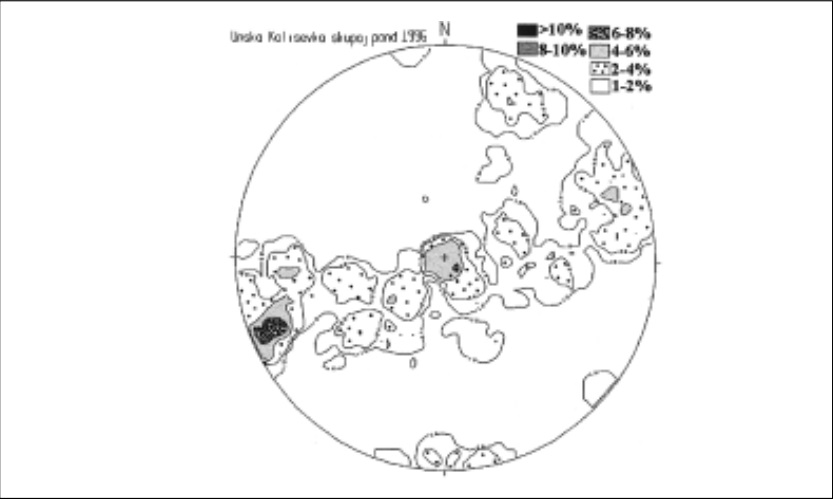Engineering Method Versus Eraso Method of Structural Analysis in Hydraulical Study of Fractured Rock - Case Study at Unška Koliševka
DOI:
https://doi.org/10.3986/ac.v27i2.514Abstract
Namen raziskave je bil narediti primerjavo med dvema metodama strukturne analize: metodo Eraso ter inženirsko metodo in ugotoviti primernost obeh za ugotavljanje toka podzemne vode. Ti dve metodi temeljita na različnih principih: prva temelji na mikrotektonski analizi in se večinoma uporablja na površinskih golicah, medtem je bila druga razvita v namene pručevanja geotehničnih in hidravličnih lastnosti kamnine. Meritve so bile izvedene na površinskih golicah in v raziskovalnem rovu pod njimi, in sicer v dveh različnih sezonah (jesen 95 in poletje 96). Metoda Eraso se pogosto uporablja v regionalnem (mega) merilu za določanje najpogostejših smeri drenaže na krasu. Inženirska metoda pa se uporablja navadno v makro merilu, vendar so rezultati pokazali, da lahko sklepamo tudi na regionalne smeri drenaže.
The main goal of the study was to compare the Eraso method and engineering method for determining water drainage. These two methods are based on different principles: the first one is based on microtectonic analysis and is mainly applied on surface outcrops, while the second one was developped with purpose of studying geotechnical and hydraulical properties of the rock. Measurements were carried out on surface outcrops and within underground artificial tunnel in two different seasons (autumn 95 and spring 96). The Eraso method is frequently used in karst area to determine direction of regional drainage (mega scale). The engineering method was developed for studies in macro scale, but from the results is evident, that direction of regional waterflow can be obtained.
Downloads

Downloads
Published
How to Cite
Issue
Section
License
Authors guarantee that the work is their own original creation and does not infringe any statutory or common-law copyright or any proprietary right of any third party. In case of claims by third parties, authors commit their self to defend the interests of the publisher, and shall cover any potential costs.
More in: Submission chapter




